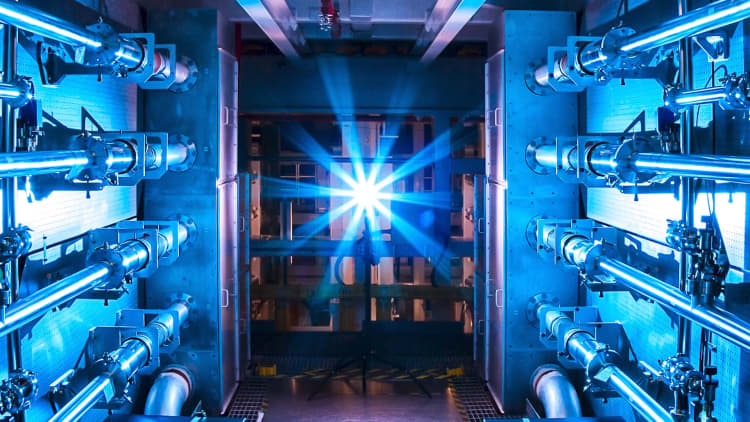Fusion power won’t be widespread for at least a decade

The nuclear fusion breakthrough heralded on Tuesday was a historic event, culminating decades of research.
At the same time, fusion power will not be contributing electricity to any power grid for at least a decade, according to most industry watchers. To get there, there will have to be many more technical breakthroughs beyond what was celebrated on Tuesday — and the money to fund them.
Just after 1 a.m. on Monday, Dec. 5, researchers at the Lawrence Livermore National Laboratory in California executed a successful experiment to produce more energy from a nuclear fusion reaction than went into the lasers used to power the reaction.
“We got out 3.15 megajoules, we put in 2.05 megajoules in the laser,” said Mark Herrmann, a program director at Lawrence Livermore, on Tuesday. “That’s never been done before in any fusion laboratory anywhere in the world. So it’s super exciting.”
In a technical panel discussion after the main press announcement on Tuesday, scientists on the team recounted their reactions on learning the news.
Tammy Ma, a laser-plasma physicist at the lab, was waiting in an airport when her boss called her. “I burst into tears. I was jumping up and down in the waiting area, the crazy person.”
It took about 300 megajoules of energy from the electricity grid to fire the laser that was used in the experiment, said Herrmann on Tuesday. That’s equivalent to what is included in about two and a half gallons of gasoline.
All of that energy went into the laser fusion reaction that showed net gain of about 1.1 megajoules — enough energy to boil a teakettle maybe two or three times.
‘This is a science achievement, not a practical one,” Omar A. Hurricane, a chief scientist at Lawrence Livermore, told CNBC.
But the amount of energy isn’t the point. “The laser wasn’t designed to be efficient. The laser was designed to give us as much juice as possible to make this incredible conditions possible,” Herrmann said. “So there are many, many steps that would have to be made in order to get to an inertial fusion as an energy source.”
That’s partly because National Ignition Facility, where the demonstration took place, is 20 years old, and was constructed using technological components made in the 1980’s and 1990’s. Laser technology has progressed significantly since then.
The reason for the celebration was simply that energy was created at all.
“It’s exciting because it proves that fusion can work and it opens the floodgates to further interest, investment, and innovation toward turning fusion into a power source,” said Arthur Turrell, a plasma physicist and the author of The Star Builders.
(L-R) US Under Secretary of Energy for Nuclear Security, Jill Hruby; US Energy Secretary, Jennifer Granholm; Director of the Lawrence Livermore National Laboratory, Kimberly Budil; White House Office of Science and Technology Policy Director, Arati Prabhakar; and National Nuclear Security Administration Deputy Administrator for Defense Programs, Marvin Adams hold a…
Read More: Fusion power won’t be widespread for at least a decade
